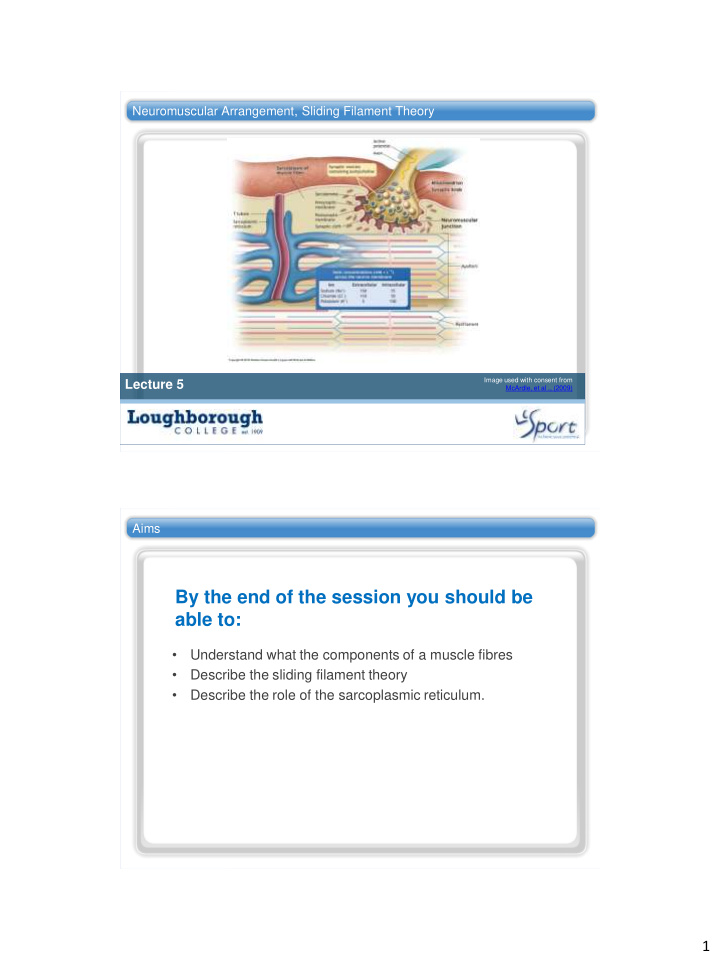



Neuromuscular Arrangement, Sliding Filament Theory Image used with consent from Lecture 5 McArdle, et al ., (2009) Aims By the end of the session you should be able to: • Understand what the components of a muscle fibres • Describe the sliding filament theory • Describe the role of the sarcoplasmic reticulum. 1
Muscle fibres • Muscle development has occurred during the embryonic stage. • The number of muscle fibres are set before you are born, muscle fibres can not divide after birth but can undergo hypertrophy. • During growth Testosterone enables muscle fibre growth. Muscle make up = Water = 75% , Protein = 20% and Salts and other substances = 5% (McArdle, Katch and Katch, 2010) Cross Section of a muscle Myofibrils / muscle fibres Muscle fibres are made up of myofibrils Myofibrils are composed of thousands of sarcomeres joined together. These are stimulated at the same time to initiate contraction. The sarcomeres are surrounded by a coating called sarcoplasmic Image used with consent from reticulum and t-tubules McArdle et al., (2009) 2
Muscle cross section Image used with consent from McArdle et al., (2009) A sarcomere Image used with consent from McArdle et al., (2009) 3
PROPERTIES Allow user to leave interaction: Anytime Show ‘Next Slide’ Button: Show upon completion Completion Button Label: Next Slide Sliding Filament Theory • Huxely, 1954, Nobel prize winner • During contraction the thin filaments (actin) slide past thick filaments (myosin) so that the actin and myosin overlap. • The Z lines are pulled towards the myosin • The I bands shorten • The H zone disappears • A bands move more closely together but do not diminish in length 4
How? Signal from brain is passed down to sarcolemma from the axon terminals of a motor neuron. This signal passes down through the t-tubules. This stimulates the release of calcium from the sarcoplasmic reticulum. Calcium then initiates the start of cross bridge formation Sliding filament theory 5
PROPERTIES On passing, 'Finish' button: Goes to Next Slide On failing, 'Finish' button: Goes to Next Slide Allow user to leave quiz: At any time User may view slides after quiz: At any time User may attempt quiz: Unlimited times References. McArdle, W.D., Katch, F.L. & Katch, V.L., 2009. Exercise Physiology: Nutrition, Energy and Human Performance 7th ed., Lippincott Williams and Wilkins. Tortora, G.J. & Derrickson, B.H., 2008. Principles of Anatomy and Physiology 12th ed., John Wiley & Sons. 6
Recommend
More recommend